The importance of a good ventilation system in a shooting range cannot be overstated. Upgrade your shooting range HVAC with Action Target.
Introduction
Shooting ranges have become more than just a place to practice one’s aim. They serve as community hubs, entertainment centers, and places where firearm safety is taught and practiced. With the global shooting range market size estimated at $1.1 billion in 2021 and expected to grow to $2.4 billion by 2031, it’s clear that these facilities are in high demand1.
During the planning and development of a shooting range, it can be easy to get hyper-focused on the look of the range and the technology the shooter interacts with. While those are both important components in the grand scheme, one aspect that often gets overlooked in the discussion about shooting ranges is the ventilation (HVAC) system. A well-designed shooting range ventilation system is not just a nice-to-have feature—it’s a crucial component for the health and safety of both the staff and the patrons. It’s about ensuring that the air you breathe while enjoying your shooting practice is clean and free from harmful pollutants.
Why Ventilation is Crucial in a Shooting Range
Shooting ranges, particularly indoor ones, are not just about providing a comfortable environment for shooters—they are about ensuring their safety. The importance of a good ventilation system in a shooting range cannot be overstated. It’s not merely about maintaining a comfortable temperature or ensuring fresh air—it’s about actively removing harmful pollutants from the environment to protect the health of everyone in the facility.
When a firearm is discharged, it releases lead dust and other harmful particulates into the air. If not properly ventilated, these pollutants can pose significant health risks if inhaled. They can lead to a range of health problems, including respiratory issues and lead poisoning, which can have serious, even life-threatening, consequences.
According to a study published in the National Center for Biotechnology Information, individuals who frequent indoor shooting ranges can have blood lead levels up to 10 times higher than the average person2. This alarming statistic underscores the crucial role of a well-designed and effective ventilation system in shooting ranges.
But the challenge of ventilation in a shooting range goes beyond simply replacing stale air with fresh air. It’s about controlling the airflow to ensure that airborne lead and other contaminants are effectively captured and removed, and that clean air is delivered to the breathing zone of each shooter. This requires a professional ventilation system designed specifically to handle the unique challenges of a shooting range environment.
The ventilation system in a shooting range is a critical component of its safety measures. It’s not just about comfort—it’s a matter of health and safety, and it requires serious attention and professional handling.
The Dangers of Poor Ventilation
Poor ventilation in a shooting range can lead to a dangerous buildup of lead dust and other harmful pollutants. This is not a minor issue—it poses serious health risks to both employees and patrons, potentially leading to long-term health issues that can be serious and even life-threatening.
Shooting ranges play a crucial role in our society. In 2021, the violent crime rate in the United States was 395.7 cases per 100,000 of the population3. This alarming statistic underscores the importance of shooting ranges as places for law enforcement officers and civilians to train and practice their shooting skills. These facilities provide a controlled environment where individuals can enhance their proficiency, which can be vital in situations that require self-defense or the protection of others.
However, the health risks associated with poor ventilation can undermine the benefits of these facilities. Without proper ventilation, individuals who frequent shooting ranges could be unknowingly putting their health at risk. The dangers of poor ventilation extend beyond immediate physical discomfort. Continuous exposure to lead dust and other pollutants can lead to chronic health conditions, including respiratory issues and lead poisoning.
The importance of proper ventilation in shooting ranges cannot be overstated. It’s not just about providing a comfortable environment—it’s a matter of public health and safety. As such, it’s crucial for shooting range operators to ensure their ventilation systems are up to standard, effectively minimizing the risk of pollutant exposure and safeguarding the health of all who use their facilities.
Choosing the Right Ventilation System
When it comes to choosing a ventilation system for a shooting range, there are several critical factors to consider. These include the size of the range, the number of shooting lanes, and the volume of shooting activity. It’s also important to consider the local climate and weather conditions, as these can significantly affect the performance of the ventilation system.
However, choosing the right ventilation system is not just about meeting these basic requirements. It’s about going above and beyond to ensure the safety and satisfaction of everyone who uses the range. A good ventilation system should not only effectively remove pollutants from the air, but it should also be energy-efficient and easy to maintain. It’s a critical investment that can significantly improve the safety and quality of a shooting range, providing a safe and comfortable environment for everyone.
At Action Target, we pride ourselves on our commitment to excellence. Our ventilation systems are designed and installed by a team of professionals who understand the unique needs and challenges of shooting ranges. We don’t just aim to meet the minimum requirements—we strive to exceed them.
Purge Ventilation System
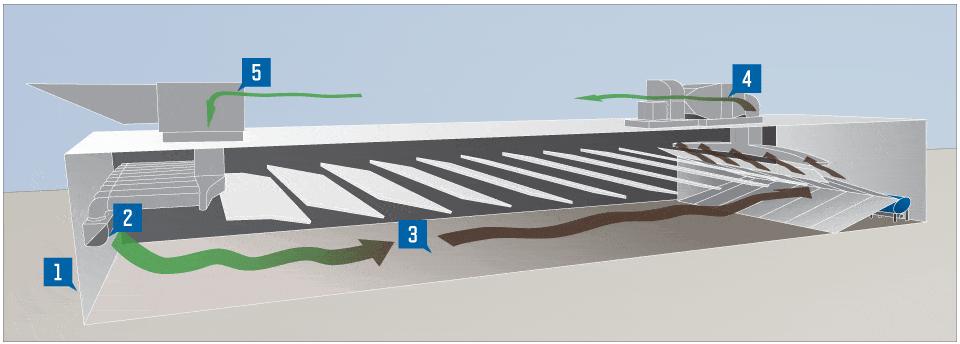
A purge system draws air from the atmosphere, introduces it into the range, filters the air, and then releases cleaned air back into the atmosphere. Purge systems use pre-filters that are changed monthly and HEPA filters that are changed every 2,400 hours.
1. SYSTEM CONTROL
Available digital and analog systems give you control over the ventilation system and provide remote access for service and maintenance.
2. LAMINAR DIFFUSION
Clean air is introduced into the range behind the shooting line. A radial diffuser ensures the air is evenly distributed.
3. AIR FLOW
Negative air pressure draws hazardous dust safely away from the shooter toward the bullet trap at a rate of 75 feet per minute, exceeding minimum NIOSH standards. It then enters an advanced filtration system for a final cleaning process.
4. RANGE EXHAUST FAN
The range exhaust fan (REF) filters contaminated air to keep the area around the range clean, exceeding OSHA, EPA, and NIOSH requirements.
5. MAKE UP AIR UNIT
The make up air unit (MAU) draws and filters air from the atmosphere and introduces it into the range. Units are available in either heating only or heating and evaporative cooling options.
Recirculating Ventilation System
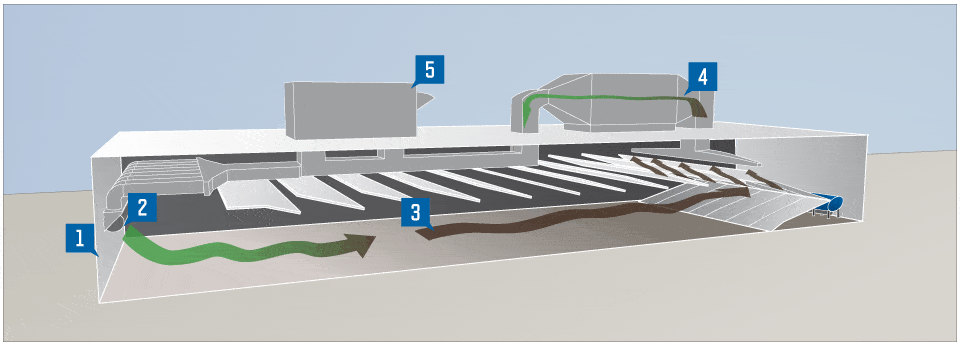
A recirculating ventilation system reuses air from the range after filtering to ensure that reintroduced air is clean. Because the system uses air that is already cooled or heated, these systems require less energy to function. Recirculating systems can be set up to remove humidity from the range. Heating and mechanical cooling systems are available.
1. SYSTEM CONTROL
Available digital and analog systems give you control over the ventilation system and provide remote access for service and maintenance.
2. LAMINAR DIFFUSION
Clean air is introduced into the range behind the shooting line. A radial diffuser ensures the air is evenly distributed.
3. AIR FLOW
Negative air pressure draws hazardous dust safely away from the shooter toward the bullet trap at a rate of 75 feet per minute, exceeding minimum NIOSH standards. It then enters an advanced filtration system for a final cleaning process.
4. RANGE EXHAUST FAN
The range exhaust fan (REF) filters contaminated air to keep the area around the range clean, exceeding OSHA, EPA, and NIOSH requirements. Recirculating systems exhaust about 30% of the air to maintain the majority air that has already been cooled or heated, improving energy efficiency.
5. MAKE UP AIR UNIT
The make up air unit (MAU) draws and filters air from the atmosphere and introduces it into the range. About 20% of the total air used by the ventilation system is drawn in through the MAU.
Our customers have consistently praised us for our commitment to excellence, integrity, and customer service. They’ve highlighted the quality of our shooting ranges, the professionalism of our installation team, and the effectiveness of our ventilation systems. These testimonials provide strong evidence of the value and reliability of our ventilation systems, reinforcing our reputation as a trusted provider in the industry.
The choice of a ventilation system is a crucial decision for any shooting range. It’s not just about ensuring comfort—it’s about safeguarding the health and safety of everyone who uses the facility. At Action Target, we’re leading the way, giving shooting ranges confidence in their choice of ventilation system.
Conclusion
A good ventilation system is a crucial component of any shooting range. It ensures the safety and health of everyone in the facility, from the staff to the patrons. As the shooting range industry continues to grow, it’s more important than ever to prioritize safety and health by investing in a high-quality ventilation system. It’s not just about meeting regulatory standards—it’s about going above and beyond to ensure that everyone who visits the shooting range can do so in a safe and healthy environment.
To learn more about Shooting Range Ventilation or to request a quote from one of our sales professionals, please click the link below. We’re happy to answer any questions you may have when considering the safety and efficiency of your shooting range project. We look forward to hearing from you soon!
FAQs
Why is ventilation important in a shooting range?
Ventilation is crucial in a shooting range to control the levels of lead and other pollutants in the air. This helps to protect the health of both staff and patrons. Without proper ventilation, these pollutants can accumulate in the air, posing serious health risks.
What are the dangers of poor ventilation in a shooting range?
Poor ventilation can lead to a buildup of lead dust and other harmful pollutants, which can pose serious health risks. These risks can include respiratory issues, lead poisoning, and other serious conditions. It’s crucial for shooting ranges to have effective ventilation systems to protect the health and safety of everyone in the facility.
What factors should be considered when choosing a ventilation system for a shooting range?
Factors to consider when choosing a ventilation system for a shooting range include the size of the range, the number of shooting lanes, the volume of shooting activity, and the local climate and weather conditions. The system should be able to effectively remove pollutants from the air, be energy-efficient, and easy to maintain.
How does a ventilation system work in a shooting range?
A ventilation system works by controlling the airflow in the shooting range to ensure that lead and other pollutants are effectively removed from the air. It does this by creating a steady flow of air that moves from the shooters towards the bullet trap, carrying with it the pollutants that are released when firearms are discharged.
What is the market size of the shooting range industry?
The global shooting range market size was estimated at $1.1 billion in 2021 and is expected to hit $2.4 billion by 2031. This growth is driven by the increasing interest in shooting sports and the growing recognition of the importance of proper training and practice in ensuring firearm safety.
Sources:
1 – Shooting Range Market to Reach $2.4 Billion by 2031: Says Allied Market Research ↩
2 – Health risks associated with poor ventilation in shooting ranges ↩







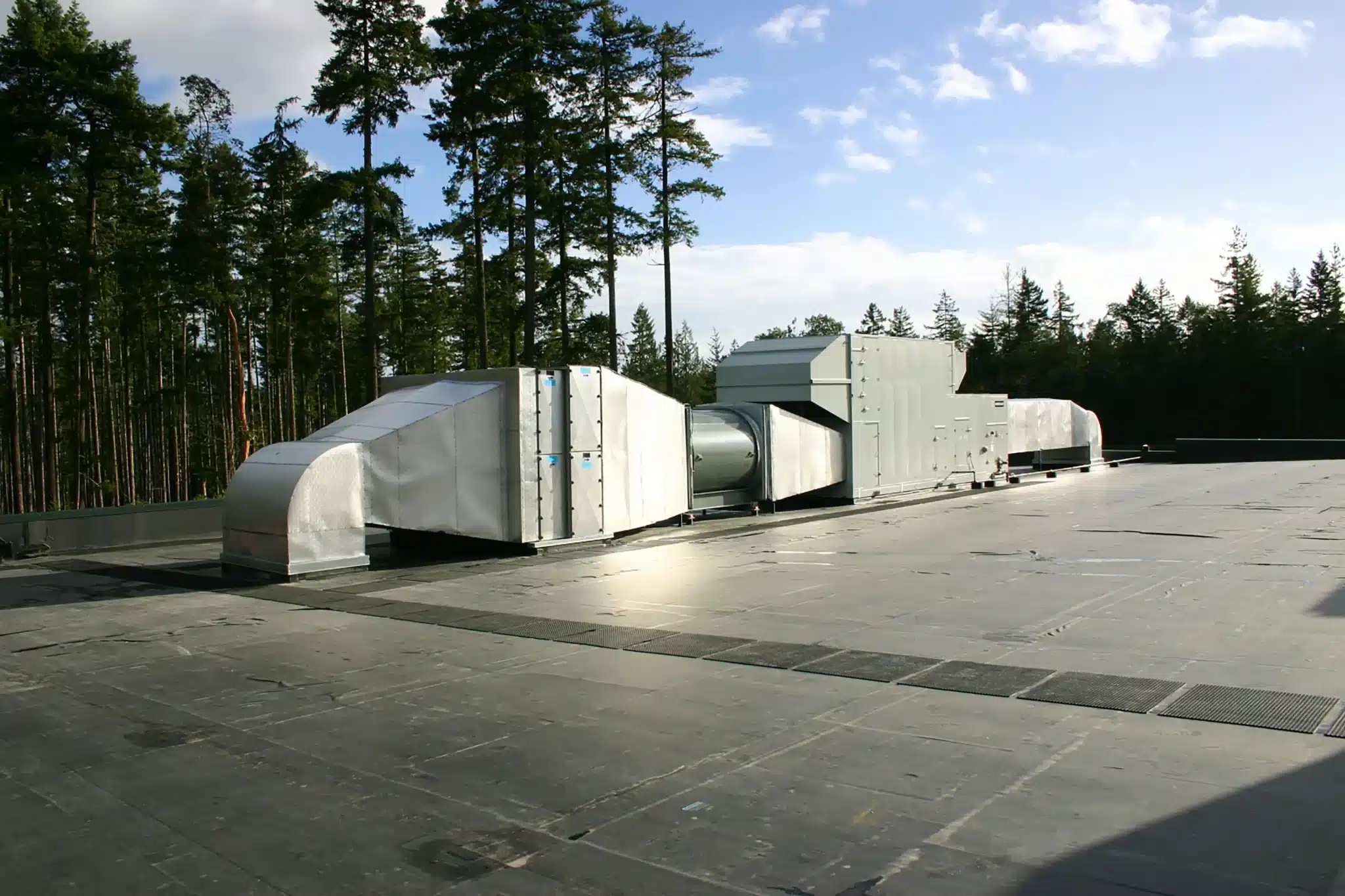
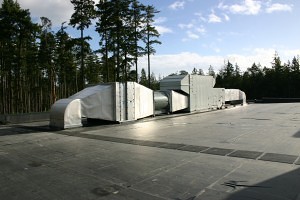
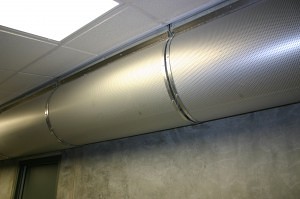

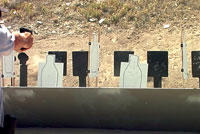
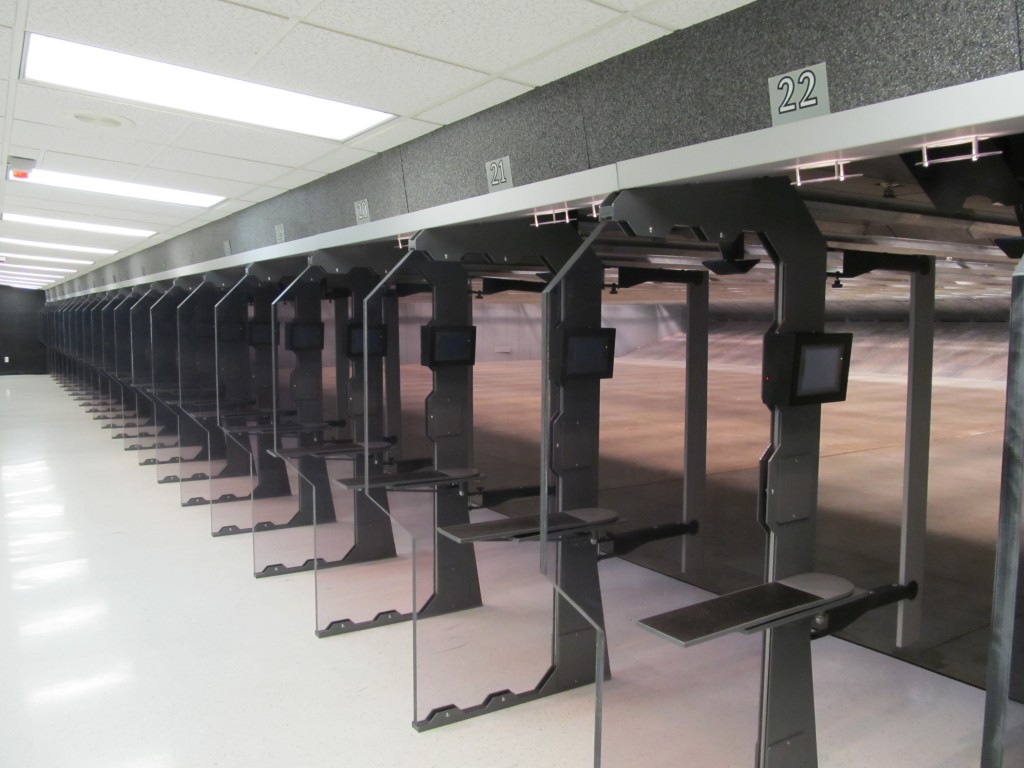 Because
Because  This is the same concept that is taking place when a bullet travels into the bullet trap. In front of the bullet there is a large wall of air that is being pushed into the trap. When a supersonic crack sounds, what is actually happening is that the bullet is breaking the shockwaves of air. This same air is what is being pushed in the bullet trap. If there were no dust collector on the bullet trap, the overpressure of the air entering the trap would collect surrounding particles and lead dust and shoot it back onto the range. This is where the dust collector becomes essential. The dust collector enables a negative pressure to be established inside the bullet trap, and it functions at a rate that is high enough to overcome the bullets and air pressure entering the trap. Referring again to the example of the cotton ball and the glass, if there was no back on the glass it would be easy to push the cotton ball to the rear of the glass by blowing on it. This is possible because there is no overpressure in the glass.
This is the same concept that is taking place when a bullet travels into the bullet trap. In front of the bullet there is a large wall of air that is being pushed into the trap. When a supersonic crack sounds, what is actually happening is that the bullet is breaking the shockwaves of air. This same air is what is being pushed in the bullet trap. If there were no dust collector on the bullet trap, the overpressure of the air entering the trap would collect surrounding particles and lead dust and shoot it back onto the range. This is where the dust collector becomes essential. The dust collector enables a negative pressure to be established inside the bullet trap, and it functions at a rate that is high enough to overcome the bullets and air pressure entering the trap. Referring again to the example of the cotton ball and the glass, if there was no back on the glass it would be easy to push the cotton ball to the rear of the glass by blowing on it. This is possible because there is no overpressure in the glass.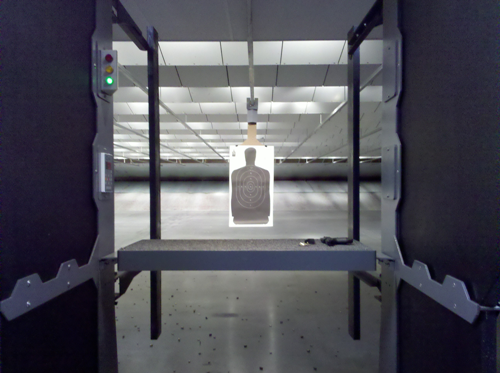
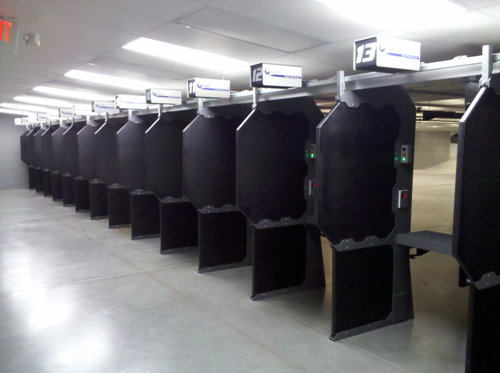
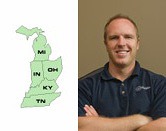 JASON SNELL
JASON SNELL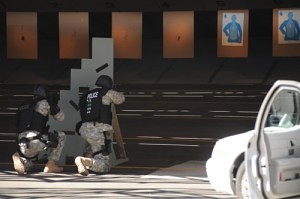 According to the Bureau of Justice Statistics, more than 1 million Federal, State, and local law enforcement officers work in the United States [DOJ 2004]. They are required to train regularly in the use of firearms. Indoor firing ranges are often used because of their controlled conditions. In addition to workers, more than 20 million active target shooters practice at indoor firing ranges. Law enforcement officers may be exposed to high levels of lead and noise at indoor firing ranges. NIOSH estimates that 16,000 to 18,000 firing ranges operate in the United States.
According to the Bureau of Justice Statistics, more than 1 million Federal, State, and local law enforcement officers work in the United States [DOJ 2004]. They are required to train regularly in the use of firearms. Indoor firing ranges are often used because of their controlled conditions. In addition to workers, more than 20 million active target shooters practice at indoor firing ranges. Law enforcement officers may be exposed to high levels of lead and noise at indoor firing ranges. NIOSH estimates that 16,000 to 18,000 firing ranges operate in the United States.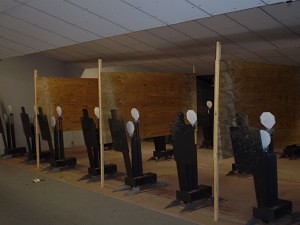
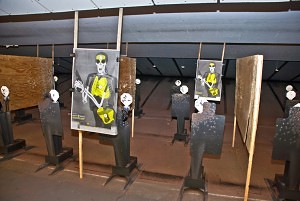

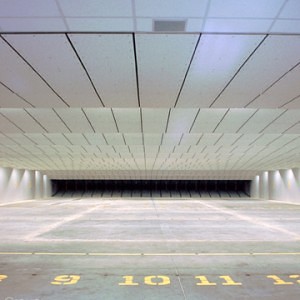
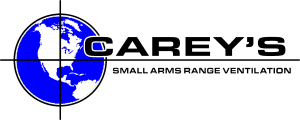 Action Target believes only the best of everything should be associated with all we do. One example of our continuous search for the best is our partnership with Carey’s Heating and Air Conditioning, Inc. After extensive review, we have aligned ourselves with Carey’s to use their heating, air conditioning and ventilation systems in order to provide our indoor range customers with the safest air conditions in the world. Action Target feels it is important for our readers to know more about Carey’s and the integral role they play in the industry. They are not only another provider of air flow products, Carey’s has been an innovator and pioneer with their systems. This article provided by Carey’s below is a little insight into the company. After reading, it will be clear to see why Action Target recommends their systems for our indoor projects.
Action Target believes only the best of everything should be associated with all we do. One example of our continuous search for the best is our partnership with Carey’s Heating and Air Conditioning, Inc. After extensive review, we have aligned ourselves with Carey’s to use their heating, air conditioning and ventilation systems in order to provide our indoor range customers with the safest air conditions in the world. Action Target feels it is important for our readers to know more about Carey’s and the integral role they play in the industry. They are not only another provider of air flow products, Carey’s has been an innovator and pioneer with their systems. This article provided by Carey’s below is a little insight into the company. After reading, it will be clear to see why Action Target recommends their systems for our indoor projects.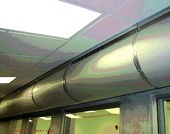 Specifically, the radial air diffusers and plenums are custom built and have been tested to provide laminar air flow at the firing line after proper commissioning. “Laminar” flow is a steady, even airflow required to safely clear contaminate from the respiratory zone of the users of the range. These special diffusers are not available from a standard diffuser supplier. The control system and programming uses standard parts from Johnson Control, but the programming of the equipment is critical. The programming is done by an experienced programmer who has worked on all of the ranges that Carey’s has completed. It is also critical to have the control system installed and tested to automatically shut down if unsafe conditions are detected. This will protect both the occupants of the range and the adjoining areas.
Specifically, the radial air diffusers and plenums are custom built and have been tested to provide laminar air flow at the firing line after proper commissioning. “Laminar” flow is a steady, even airflow required to safely clear contaminate from the respiratory zone of the users of the range. These special diffusers are not available from a standard diffuser supplier. The control system and programming uses standard parts from Johnson Control, but the programming of the equipment is critical. The programming is done by an experienced programmer who has worked on all of the ranges that Carey’s has completed. It is also critical to have the control system installed and tested to automatically shut down if unsafe conditions are detected. This will protect both the occupants of the range and the adjoining areas.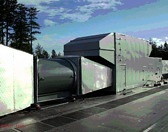 Carey’s Heating and Air Conditioning, Inc. has been an innovative force in range ventilation design for over 15 years.
Carey’s Heating and Air Conditioning, Inc. has been an innovative force in range ventilation design for over 15 years.